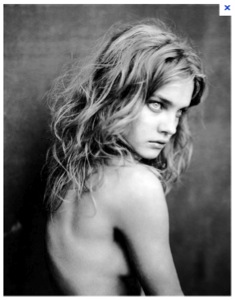After reading the module guide it stated that during the semester we would be split into groups to attend light workshop sessions. This week it was my groups turn for an induction to the studio. This was a complete new experience to me as in college I was more journalism based and focused on the theory side over the practical.
It was important for me to understand how the studio works, which will aid me to gain more experience on the photography side and seen as I have a lighting assignment to do, what a way to get started by testing myself in the studio.
Although this was a fun session, we had to get everything set up and running, which I found a little challenging as I didn’t have any experience working in the studio, however, I quickly got to grasp with the equipment needed and how it works. Unfortunatly I was unable to bring my camera to the workshop, therefore missing out on getting myself some snaps of the setup, however, below is a step-by-step guide on setting up in the studio.
LIGHTING CHECKLIST
1 IN THE STUDIO:
Set up the backdrop first. Wind off enough Colorama before raising the backdrop on the stand and remember to clip the remainder to stop the roll unrolling further.
2 When you set up your stands for the backdrop and lights make sure the horizontal struts in the base tripod are at around 90 degrees to the central column of the stand.
3 Make sure that you put the heads on the stands the right way: VERTICALLY, with the tube on the light’s bracket completely mounted on the brass fitting at the top of the stand. DO NOT put the brass fitting through the horizontal holes drilled into the tube.
4 Always raise the stand by the lowest section on the stand for extra stability.
5 Make sure that your leads from the light are not causing a hazard or obstruction.
6 NEVER turn the light on before removing the plastic cover.
7 ALWAYS put a soft box on the light after removing the cover.
8 On the back of the light make sure that the ready button is on. Make sure that the beep is on or off (if you want the beep to tell you that your lights have recharged after firing). Make sure the cell button is on if you are not going to plug your camera lead into another light.
9 On the back of the light click the lamp button until the red light on the side is on for rel this means that the strength of the modelling light is the same as the strength of the flash setting.
10 Set the flash strength using the dials on the side.
11 Make sure that your light meter has the correct ISO (100) and correct shutter speed (125) for your cameras. You can change the ISO by scrolling with the horizontal arrows to the ISO icon.
12 Make sure that your light meter is on the correct programme – the lightening flash symbol– by scrolling through the different options with the horizontal arrows.
13 Always take a light reading when you move the lighting set up
14 Make sure that your fill light is weaker than your key light to create a modelling effect.
15 Raise lights up and the dip the heads down to cast shadows on the floor not the back wall.
16 Always make sure that your lights have cooled down before taking them apart and putting the plastic covers back on
17 For the portable lights: Remember that the modelling light will not work when the light is plugged into the battery pack.
18 Make sure that you have connected the two halves of the battery pack together. If you are only using one light remember to plug in the safety plug on the battery pack or the unit will not work.
19 Start with an ambient light reading and then fit your lights to that light reading. Remember that your shutter speed must be 125th or less. Adjust the lights and your aperture until you get the effect you want.
During this workshop I found the studio was simple enough to set up but what I found challenging the most was adjusting the light settings, as this was all new to me, but hopefully I will be able to experiment with the settings more when I revisit the studio for my lighting assignment. I enjoyed the experience as a whole, our group took fun photos of one another as this session as basically just an introduction to help us get use to working in a studio. Next time I will test the light meters by reading the reflective lights with the use of the handheld meter, which I think is incredibly useful for shooting in a studio.
Below are a set of images of myself and the groups experience during the workshop.


















